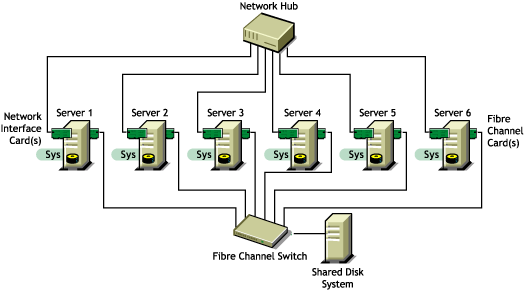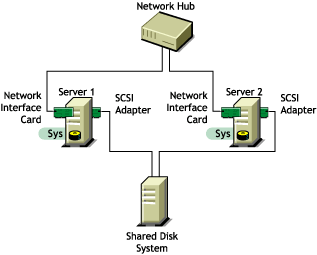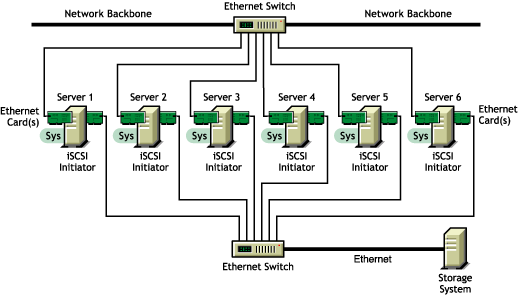1.3 Cluster Configuration
Typical cluster configurations normally include a shared disk subsystem connected to all servers in the cluster. The shared disk subsystem can be connected via high-speed Fibre Channel cards, cables, and switches, or be configured to use shared SCSI or iSCSI. If a server fails, another designated server in the cluster automatically mounts the shared disk volumes previously mounted on the failed server. This gives network users continuous access to the volumes on the shared disk subsystem.
Typical resources might include data (volumes), applications, and services. The following figure shows how a typical Fibre Channel cluster configuration might look.
Figure 1-3 Typical Fibre Channel Cluster Configuration

Although Fibre Channel provides the best performance, you can also configure your cluster to use shared SCSI or iSCSI. The following figure shows how a typical shared SCSI cluster configuration might look.
Figure 1-4 Typical Shared SCSI Cluster Configuration

iSCSI software is included with NetWare 6.5. The following figure shows how a typical iSCSI cluster configuration might look.
Figure 1-5 Typical iSCSI Cluster Configuration

1.3.1 Cluster Components
The following components make up a Novell Cluster Services cluster:
-
From 2 to 32 NetWare servers configured to use IP, each containing at least one local disk device (used for a local sys: volume).
-
Novell Cluster Services software running on each NetWare server in the cluster.
-
A shared disk subsystem connected to all servers in the cluster (optional, but recommended for most configurations).
-
High-speed Fibre Channel cards, cables, and switch or SCSI cards and cables used to connect the servers to the shared disk subsystem.